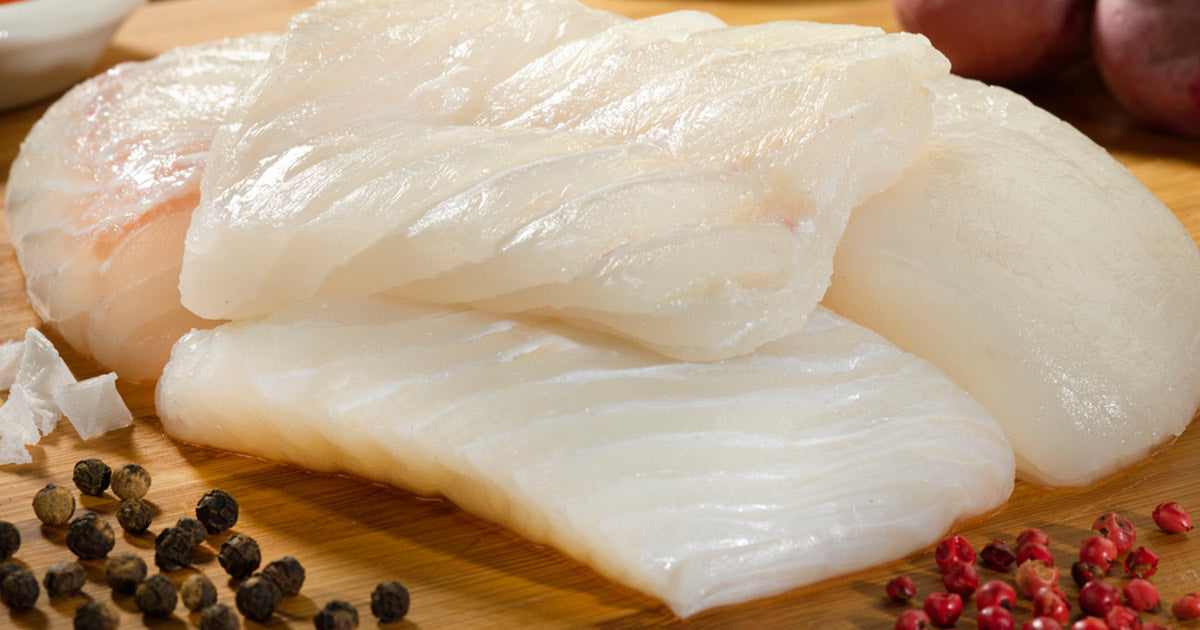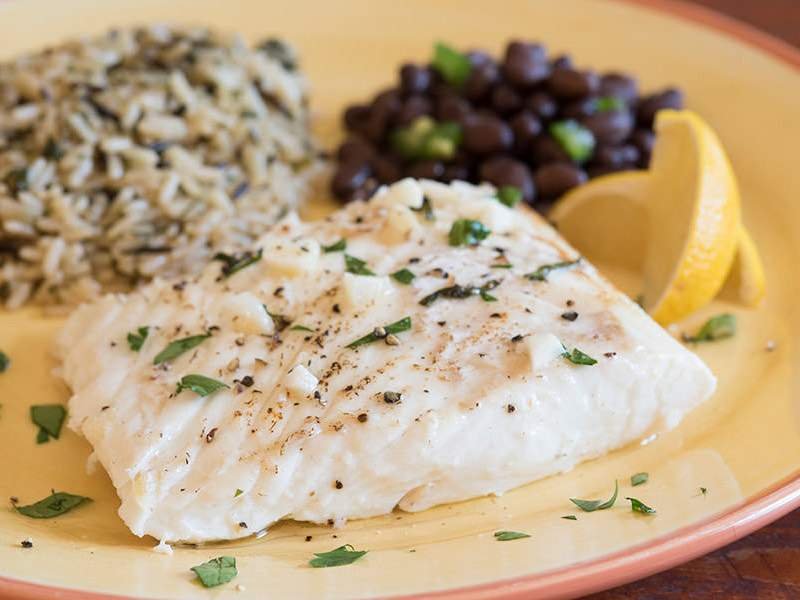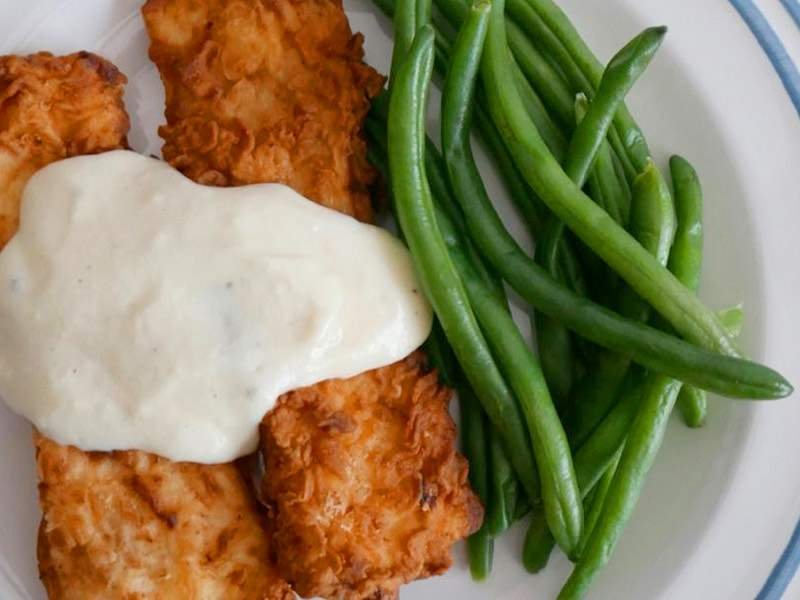Your Essential Guide to Halibut

Halibut is one of our bestselling fish, and for good reason. Halibut is super versatile in the kitchen, and a favorite with the whole family. It’s also one of the most fascinating fish in the market. Robert DiGregorio, FultonFishMarket.com’s Head of Quality Control, shares some fishy facts about this unique species.
Halibut, Hippoglossus hippoglossus, are an interesting fish. They are a member of the flatfish family, and generally look like flounder or fluke, with some very obvious differences. One obvious difference is the size. Halibut are one of the largest species of fish, in fact only swordfish, tuna, and some species of shark grow larger. Whereas fluke and flounder are considered large at five pounds, halibut can grow to hundreds of pounds! The current verified halibut world record is a specimen taken off Norway in 2013 weighing in at 515 lbs! There are stories of larger fish almost every year, and one story is of a Captain Ree, who in 1917, brought in to Boston an eviscerated specimen weighing in at 615 lbs. That means when it was whole it must have weighed at least 700 lbs!
The largest halibut I’ve ever seen personally at the Fulton Fish Market was just over 400 lbs, but most East Coast halibut are sold in the 10-50 lb or 50-85 lb range.
Another reason halibut are fascinating is their metamorphosis. The babies develop symmetrically, with eyes on either side of their heads, and they swim at that time as do other fish. Then, around six months later, they undergo a metamorphosis and the eye on the white side, or what becomes the white side, migrates to the darker side right next to the other one! The fish becomes flat, that is, swims on its side - one side is dark (the top side) and the other side is white (the bottom side), and now both eyes are on one side of its head. A fascinating series of changes brought on by evolutionary motivations one can only guess and marvel at!
The East Coast halibut, or Atlantic halibut, has a large natural range, from Greenland in the north, all along the Canadian Maritimes, to (rarely) Virginia. Most prefer the waters no further south than the Gulf of Maine. Halibut are bottom dwellers mostly, and they’re perfectly camouflaged when they bury themselves in the bottom, flat as can be, their dark side up, waiting for prey.
Large halibut eat anything they can fit into their mouths, and they are voracious. Studies report finding cod, haddock, cusk, hake, herring, crabs, lobsters, clams, almost anything that’s available to them. Even an occasional seabird that dared dive too deep or lingered too long on the surface. They prefer the bottom but will come up as far as they have to for food.
The history of halibut fishing in the Gulf of Maine leaves no doubt that this species shows the effects of hard fishing. In an effort to restore this fishery regulations and limits are strictly enforced. For instance, all halibut caught must be tagged or released immediately. Commercial fishermen are only allowed 25 tags per year, and any one vessel is allowed only 25 fish per year. They have to use certain kinds and certain size hooks. Fish may not be transferred between vessels, the minimum size is 41 inches, and filleting at sea is prohibited. With all of these (and other) regulations, Gulf of Maine halibut is rarely seen.
Is Halibut Sustainable?
Most of the Atlantic halibut nowadays come from Canada, mainly from Nova Scotia and Newfoundland. The Marine Stewardship Council (MSC) as recently as 2018 has deemed the Canadian East Coast halibut fishery healthy and sustainable. Furthermore, they found there is no detrimental impact to incidental bycatch species or the marine environment. It is a very healthy and environmentally aware fishery and you can buy halibut online with confidence from FultonFishMarket.com and a clear conscience.
Years ago, halibut, as well as salmon and cod for that matter, was almost always sold in steak form. These days though, most people just don’t want to bother with bones, so at FultonFishMarket.com we offer it in beautiful, skin off portions. No waste, easy to prepare, and completely boneless.
What Does Halibut Taste Like?
Halibut is a thick, white fleshed fish, not as mild or as flaky as cod for example, but with a firmer texture and sweeter flavor. If you’re feeling a bit more adventurous you should try our halibut collars. Halibut collars, which are the part of the fish where the head is connected to the body, has some of the best meat on the whole fish. Old fish guys like me know that fish collars are great eating. Very flavorful, rich, fatty and tender. Halibut collars can be used for soups and stock, but for me are even better roasted or grilled as the main course.
Our Best Halibut Recipes
This Marinated Halibut recipe couldn't be easier or tastier. The firm, tender texture of fresh halibut holds up well to marinating, making this a family favorite.
We've put a fresh twist on the ultimate comfort food dish using bestselling halibut - complete with gravy! Serve with mashed potatoes, green beans and a fried egg to enjoy this diner classic at home.
This sunny Thai coconut fish curry will brighten up midweek meals, and because it's mild, it's the perfect curry to make for the whole family. We love fresh halibut in this easy seafood curry recipe but you can use your favorite white fish.



